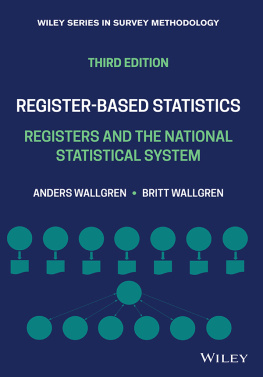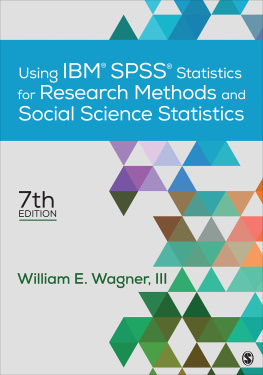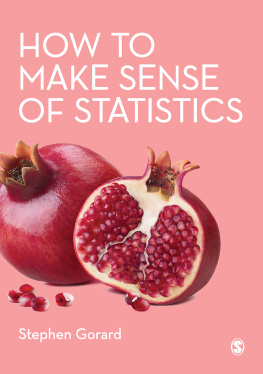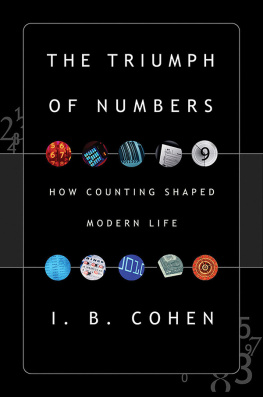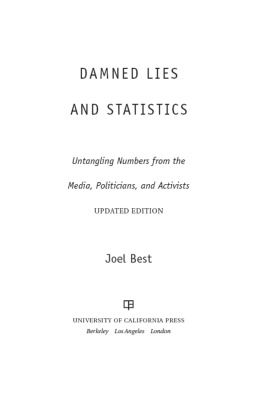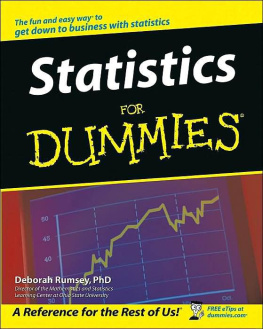STATISTICS, PUBLIC DEBATE AND THE STATE, 18001945: A SOCIAL, POLITICAL AND INTELLECTUAL HISTORY OF NUMBERS
STUDIES FOR THE INTERNATIONAL SOCIETY FOR CULTURAL HISTORY
Series Editors: | Anu Korhonen Birgitta Svensson |
Editorial Board: | Chris Dixon |
FORTHCOMING TITLES
A History of Emotions, 12001800
Jonas Liliequist (ed.)
A Cultural History of the Radical Sixties in the San Francisco Bay Area
Anthony Ashbolt
Breast Cancer in the Eighteenth Century
Marjo Kaartinen
STATISTICS, PUBLIC DEBATE AND THE STATE, 18001945: A SOCIAL, POLITICAL AND INTELLECTUAL HISTORY OF NUMBERS
BY
Jean-Guy Prvost and Jean-Pierre Beaud
First published 2012 by Pickering & Chatto (Publishers) Limited
Published 2016 by Routledge
2 Park Square, Milton Park, Abingdon, Oxon OX14 4RN
711 Third Avenue, New York, NY 10017, USA
Routledge is an imprint of the Taylor & Francis Group, an informa business
Taylor & Francis 2012
Jean-Guy Prvost and Jean-Pierre Beaud 2012
To the best of the Publishers knowledge every effort has been made to contact relevant copyright holders and to clear any relevant copyright issues.
Any omissions that come to their attention will be remedied in future editions.
All rights reserved, including those of translation into foreign languages. No part of this book may be reprinted or reproduced or utilised in any form or by any electronic, mechanical, or other means, now known or hereafter invented, including photocopying and recording, or in any information storage or retrieval system, without permission in writing from the publishers.
Notice:
Product or corporate names may be trademarks or registered trademarks, and are used only for identification and explanation without intent to infringe.
BRITISH LIBRARY CATALOGUING IN PUBLICATION DATA
Prevost, Jean-Guy, 1955
Statistics, public debate and the state, 18001945: a social, political and intellectual history of numbers. (Studies for the International Society for Cultural History)
1. Statistics History 19th century. 2. Statistics History 20th century. 3. Statistics Social aspects. 4. Statistics Political aspects.
I. Title II. Series III. Beaud, Jean-Pierre, 1950
301.0727-dc23
ISBN-13: 978-1-84893-296-8 (hbk)
Typeset by Pickering & Chatto (Publishers) Limited
CONTENTS
This book brings together work we have done, together or separately, over the last two decades. We have used some unpublished as well as previously published material. In each case, content and form have been thoroughly revised and brought up to date. In some cases, substantive additions have been made.
is based on J.-P. Beaud, mergence, migrations et routinisation du pourcentage dans les sciences du politique (XVIIeXIXe sicles), Revue de synthse, 130:4 (2009), pp. 63760.
is based on J.-G. Prvost, Espace public, action collective et savoir social: Robert Gourlay et le Statistical Account of Upper Canada, Histoire sociale/Social History, 35:69 (2003), pp. 10939.
uses some parts of J.-P Beaud and J.-G. Prvost, Back to Qutelet, Recherches Sociologiques, 29:2 (1998), pp. 83100.
is based on J.-P. Beaud and J.-G. Prvost, La forme est le fond: la structuration des appareils statistiques nationaux, 18001945, Revue de synthse, 118:4 (1997), pp. 41956.
is a revised version of J.-G. Prvost, Controversy and Demarcation in Social Science: Early Twentieth-century Demography and Walkers Theory of Immigration and the Birth-Rate, Social Science History, 22:2 (1998), pp. 13158.
is a revised version of J.-P. Beaud and J.-G. Prvost. Statistics as a Science of Government: The Stillborn British Empire Statistical Bureau (19181920), Journal of Imperial and Commonwealth History, 33:3 (2005), pp. 36991.
Jean-Guy Prvost has presented earlier versions of in seminars and conferences: at the Fondation de la Maison des Sciences de lHomme (Paris, 2010), at the Social Science History Association Annual Conference (Chicago, 2010) and at the cole Normale Suprieure (Paris, 2012).
uses elements drawn from J.-P. Beaud and J.-G. Prvost, The Politics of Measurable Precision: The Emergence of Sampling Methods in Canadian Official Statistics, Canadian Historical Review, 79:4 (1998), pp. 691725 (copyright 19922012 University of Toronto Press Incorporated; reprinted with permission from University of Toronto Press Incorporated [www.utpjournals.com]) and from an oral presentation both made at the Universit CaFoscari (Venice) in 2005.
Throughout these years, we have received continuous financial support from the Social Sciences and Humanities Research Council of Canada. Our home institution, the Universit du Qubec Montral, has also helped in numerous ways. To them, to the external reviewers who encouraged us in this project and to all those who commented on earlier versions, we are truly grateful.
Numbers have become, over the last two centuries, a central feature of public discourse and a privileged means of founding knowledge and trust in many walks of life. GNP, the unemployment rate, the consumer price index, life expectancy, crime rates, estimates of risk, concentration ratios, IQ and a host of other statistical devices are now part of our informational environment one might say of the very fabric of our daily existence. There are few problems we would now consider examining, discussing and tackling without making use of numerical knowledge and without, therefore, resorting to the rhetoric of numbers. This continuous expansion of statistical artefacts can be described as a momentous epistemic transformation that has to a large degree displaced earlier authoritative forms of persuasion based on local and singular types of knowledge, often couched in literary form, with information of a more general and standardized character, generally presented in a numerical guise. But this transformation has also been political and institutional, in the sense that it has been made possible because of the ongoing increase in information-gathering activities carried on by governments and their agents from the early nineteenth century on. The harmonization of weights and measures, the cadastral survey of the national territory, the advent of periodical censuses, the setting up of standardized procedures to record the basic vital events of each individuals birth and death, all partake to this multi-faceted enterprise, under the conjoined and yet distinct legitimacies of modern science and of the modern state. Evidence-based policy may be of recent coinage and it may very imperfectly describe the actual practice of governments but the standard it sets coincides rather well with the pleas and arguments put forward, at various junctures, by those who pushed for such an approach to the understanding and management of social and political issues and for institutions accordingly conceived to be set up.
In this book, we examine a number of specific, often not well known, and telling episodes of how this intellectual and political change occurred. Even though it covers a period that may be defined as going from the creation of the first bureaus dedicated to the collection and processing of statistical information (


